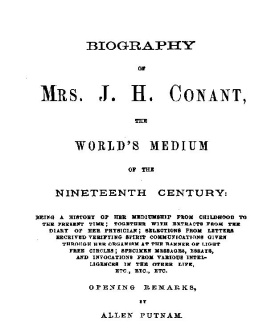Contents
Guide

The author and publisher have provided this e-book to you for your personal use only. You may not make this e-book publicly available in any way. Copyright infringement is against the law. If you believe the copy of this e-book you are reading infringes on the authors copyright, please notify the publisher at: us.macmillanusa.com/piracy.
For my students
A lot of people come across the stories of Fantine, Cosette, the Thnardiers, Valjean, Javert, Marius and Gavroche in some form or another when they are young. I dont know why, but I wasnt part of the crowd and I didnt encounter Les Misrables until much later on, in circumstances that arent very creditable in the life of a professor of French. I was actually looking for a light but long book to take with me on a hike, to read by lamplight in the tent, and a one-volume edition of Hugos novel printed on Bible paper sitting unread on my shelf struck me as having the highest reading-to-weight ratio in the universe. I slipped it into a little bag and took it along. The camping trip on a long-distance trail in the Alps turned out to be a disaster. It rained and it snowed, I caught a cold and then gave up. We trudged down a mountain path and found a hotel, where I wrapped myself in warm blankets and in Les Misrables .
I was entranced. I stayed ill rather longer than necessary in order to follow this moving, challenging and immensely engaging tale to the end. I had never before read a work so extraordinarily diverse yet so tightly wound round its central thread. Les Misrables may be a monster in size, but theres nothing baggy about it. I dont think Im allowed to urge you to take sick leave to repeat the experience that I had, nor do I dare suggest you abandon your holiday plans to make time to consume a 1,500-page novel in one gulp. But I doubt youll regret it if you do.
Fortunately, there is a more practical way to enjoy Hugos novel within a busy life. Les Misrables consists of five parts, divided respectively into 8, 8, 8, 15 and 9 books, making 48 in all. Each book consists of a number of chapters, varying from none at all (Part V, Book 4, conventionally designated V.4, counts as a chapter all on its own) to 22 (III.8, the longest book, which ends with the dramatic denouement of the ambush at 5052, Boulevard de lHpital). The divisions werent made until the final preparation of the manuscript for printing in the winter of 18612, and Hugo never let on, or perhaps never consciously registered, what the underlying numerical design of his book was. But the fact is that Les Misrables is made of exactly 365 chapters. You can therefore read one chapter a day most of them are quite short and complete Hugos vast novel of love and revolution in the time that it takes planet Earth to complete its revolution around the sun.
Everything in a work of art is an act of the will, Hugo wrote in an introduction to his own sons translation of Shakespeare into French. What makes Les Misrables such an amazing work of art is that despite its length, its complexity and its vast scope, every detail and every dimension even if not made explicit was designed, calculated and decided by the author.
* * *
Nineteenth-century France was a turbulent and frequently violent place, but it was also uncommonly generous to the rest of the world. From the Revolution of 1789 to the dawn of the twentieth century it gave away many treasures for free the Rights of Man, decimal currency, knowledge of hieroglyphics, photography, cinema, the Statue of Liberty, pasteurized milk the list could go on and on. Its painters and composers set new standards that we still admire, and its writers still dominate our ideas of what poetry and fiction can be. But among all the gifts France has given to Hollywood, Broadway and the common reader wherever she may be, Les Misrables stands out as the greatest by far. This reconstruction of how this extraordinary novel arose, how it was published, what it means and what it has become is my way of saying thank you to France.
There are many translations into English of Victor Hugos novel, done in different countries at different times. In this book, quotations from Les Misrables are taken from the most recent translation, by Christine Donougher, published by Penguin in 2013, with occasional adaptations of my own, which are signalled when they arise.
References are expressed in alternating Roman and Arabic numerals referring to Part, Book, and Chapter number, so the rough place of a quotation can be found in any complete edition. The page number following takes you directly to Christine Donoughers English translation.
Translations of other sources quoted are my own, unless otherwise indicated in footnotes or in the works cited at the end of this book.

France After Waterloo

The Journey of Les Misrables
The Commodore Clipper , a 14,000-ton roll-on roll-off ferry, leaves Portsmouth early in the morning, glides through the naval dockyards at walking pace, gathers speed as the Isle of Wight passes on the starboard side and reaches twenty-two knots in the open waters of the English Channel. The swell can toss small boats up and down, but the ferrys stabilizers deceive you into thinking the sea is made of rippled gelatine. Before long, the westernmost tip of the Cotentin peninsula comes into view; then the ship clears Cap de la Hague to port, heads for the low bar of Sark and, after skirting round Herm and picking its way among jagged rocks breaking the surface of a blue-green sea, enters the harbour of St Peter Port, on the island of Guernsey. The countryside around it is lush and green. The first daffodils bloom before January is out.
Victor Hugo landed here at around ten in the morning of 31 October 1855, after a shorter but rougher crossing in wind and rain on a 300-ton paddle steamer from St Helier, in Jersey. But even the tiny Courier was too big to dock at St Peter Port in those days. The poet and his party had to clamber down ladders into small boats to be rowed ashore. Dock hands took care of the baggage, including the all-important manuscript trunk.
Anyone landing in much greater comfort and safety on the Commodore Clipper nowadays sees much the same quaint townscape as Hugo did. Its only a short walk from the new harbour to the steps up to High Street, and from there the same lane takes you to Hauteville Street, lined with three-storey town houses built in the earlier part of the nineteenth century. Halfway up is a large, plain, double-fronted mansion now marked by a tricolour flag and a nameplate declaring it to be the property of the City of Paris and the Maison de Victor Hugo . Thats because Hauteville House, at St Peter Port, Guernsey, is the unlikely location where the most extraordinary novel ever written in French was made.
How did a tiny feudal outpost of the British Crown come to serve as the workbench for a vast panorama of nineteenth-century France? Theres barely a word that refers to the Channel Islands in all of Les Misrables , yet it is hard to imagine how it could have been brought to completion without the sanctuary provided by Hauteville House. The story of the long-drawn-out composition of this very long book is almost as dramatic as the story it tells.

















